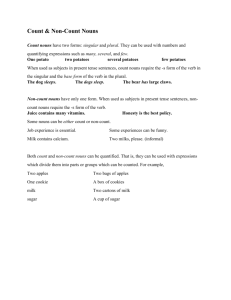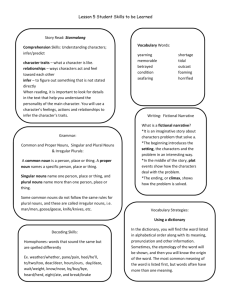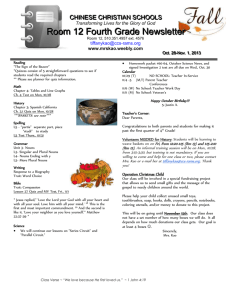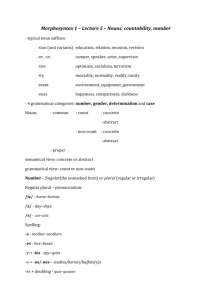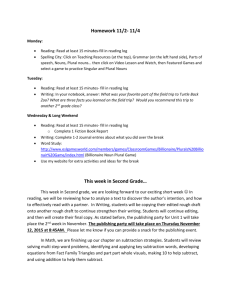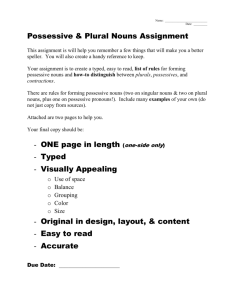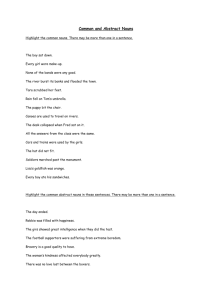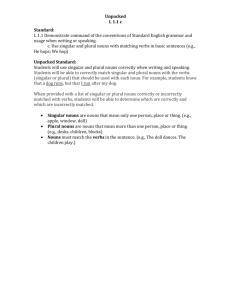Unit 6 - Count Non
advertisement
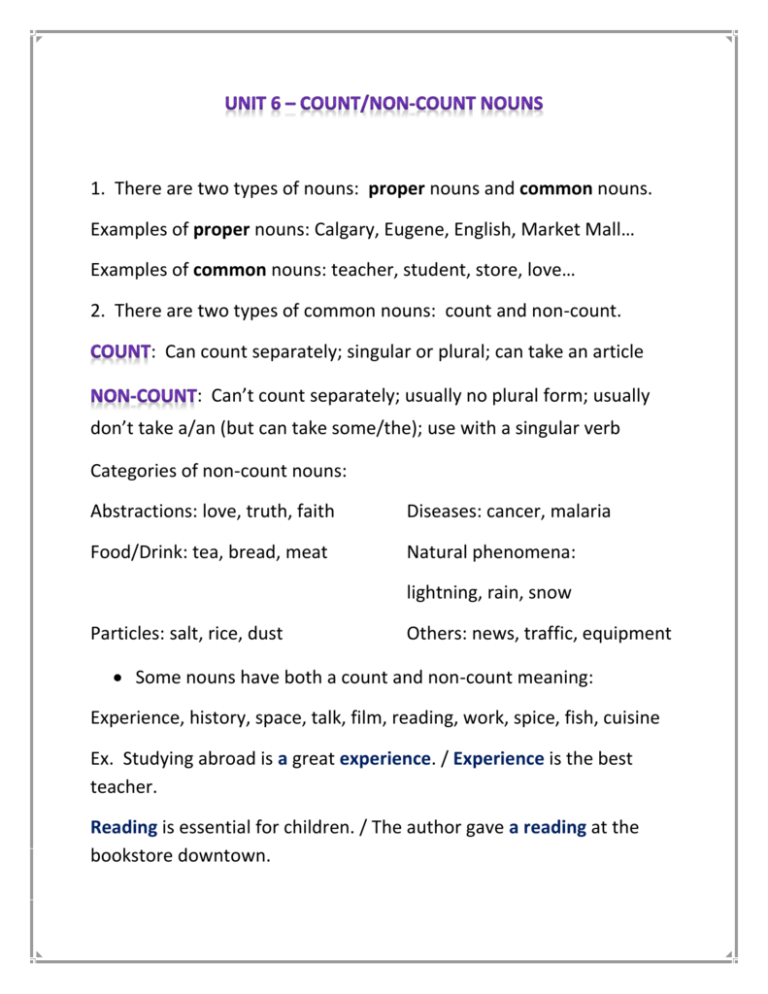
1. There are two types of nouns: proper nouns and common nouns. Examples of proper nouns: Calgary, Eugene, English, Market Mall… Examples of common nouns: teacher, student, store, love… 2. There are two types of common nouns: count and non-count. : Can count separately; singular or plural; can take an article : Can’t count separately; usually no plural form; usually don’t take a/an (but can take some/the); use with a singular verb Categories of non-count nouns: Abstractions: love, truth, faith Diseases: cancer, malaria Food/Drink: tea, bread, meat Natural phenomena: lightning, rain, snow Particles: salt, rice, dust Others: news, traffic, equipment Some nouns have both a count and non-count meaning: Experience, history, space, talk, film, reading, work, spice, fish, cuisine Ex. Studying abroad is a great experience. / Experience is the best teacher. Reading is essential for children. / The author gave a reading at the bookstore downtown. You can make non-count nouns countable by adding the phrase “a --of”. (To be more precise/formal) Ex. A piece of advice A drop of rain A grain of rice (More examples on p. 95) “Some/any” are more common in casual conversation. A non-count noun in a countable sense means kind/type/variety of (especially food/drink): Ex. The supermarket sells different teas. / Many delicious wines come from Argentina. “A/an” can also show an amount: She buys a coffee every morning. (a coffee = a cup of coffee) Odds and ends: Some non-count nouns end in “-s”. Ex. News, mathematics, economics, physics. Use a singular verb. There are some irregular plurals of count nouns: cactus/cacti stimulus/stimuli phenomenon/phenomena thesis/theses Sometimes the plural is the same for animals: sheep deer moose fish People/police are plural, and take a plural verb: The police are coming!
